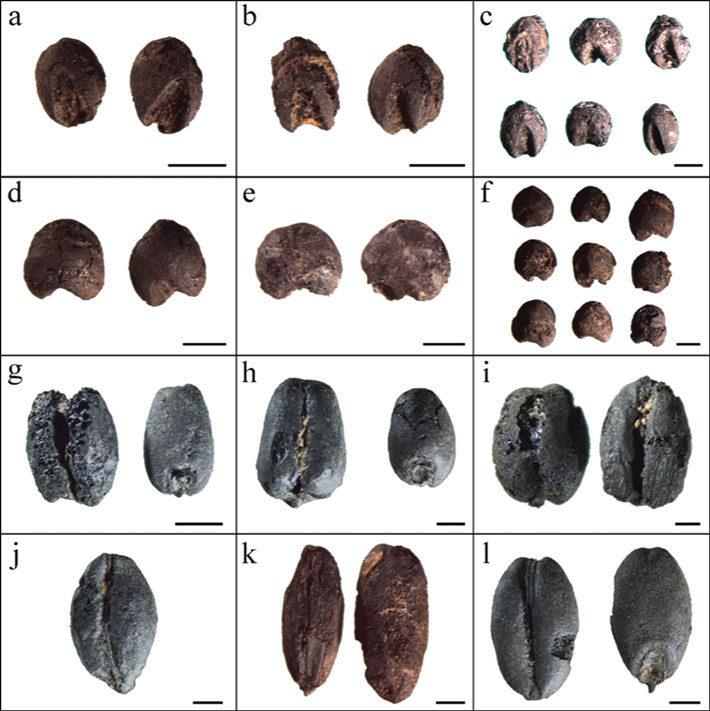 ST. LOUIS, MISSOURI—According to a statement released by Washington University in St. Louis, irrigation was practiced in northern China’s Loess Plateau some 4,000 years ago, when wheat and barley were introduced to the region from the Fertile Crescent of southwest Asia. Growing wheat requires more water than growing barley, but its growing cycle does not fit northern China’s rainy season, explained Xinyi Liu of Washington University. He and his colleagues decided to investigate ancient growing conditions in the Loess Plateau by measuring the levels of stable carbon and nitrogen isotopes in samples of ancient wheat and barley, and in millet seeds, which were locally domesticated about 8,000 years ago. They found that the wheat crops had received plenty of water. “The water management may have been achieved either by deliberate watering [through simple ditches] or by strategic planting in soils with higher water retention,” Liu explained. Barley, on the other hand, was likely planted without irrigation, in the same manner as the locally domesticated millet. Knowledge about cultivating the plants was probably transmitted with the seeds, Liu and his colleagues surmised. Read the original scholarly article about this research in Antiquity. To read about the adoption of domesticated crops in ancient Chinese regional cuisines, go to "You Are How You Cook."
ST. LOUIS, MISSOURI—According to a statement released by Washington University in St. Louis, irrigation was practiced in northern China’s Loess Plateau some 4,000 years ago, when wheat and barley were introduced to the region from the Fertile Crescent of southwest Asia. Growing wheat requires more water than growing barley, but its growing cycle does not fit northern China’s rainy season, explained Xinyi Liu of Washington University. He and his colleagues decided to investigate ancient growing conditions in the Loess Plateau by measuring the levels of stable carbon and nitrogen isotopes in samples of ancient wheat and barley, and in millet seeds, which were locally domesticated about 8,000 years ago. They found that the wheat crops had received plenty of water. “The water management may have been achieved either by deliberate watering [through simple ditches] or by strategic planting in soils with higher water retention,” Liu explained. Barley, on the other hand, was likely planted without irrigation, in the same manner as the locally domesticated millet. Knowledge about cultivating the plants was probably transmitted with the seeds, Liu and his colleagues surmised. Read the original scholarly article about this research in Antiquity. To read about the adoption of domesticated crops in ancient Chinese regional cuisines, go to "You Are How You Cook."
Knowledge About Cultivation May Have Traveled With Early Crops
